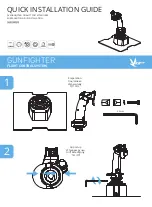
15
Prepare to use you BTGPS III Receiver
To help you begin to use your BT GPS Receiver (“BTGPS III”), read this User Guide
in the first step. This User Guide explains the detail how BTGPS III operates,
functions, and common features of the BTGPS III. A short glossary of GPS related
terms and abbreviations at the back of the User Guide.
Before you begin using your BTGPS III, you must complete the application software
installation tasks on your host device like PAD, PDA mobile phone, MMS mobile
phone, handheld PC, and portable PC hardware. For information about the
hardware operation and application software installation, please refer to the
documentation that accompanies each product.
For operation detail information, please consult Chapter 3. In order to get more
familiar with your BTGPS III, please first read Chapter 2 before starting to operate
BTGPS III.
GPS signal reception
The Global Positioning System (GPS) is a space-based radio-navigation system.
This system consists of 24 satellites, which orbit the Earth at an altitude of
approximately 17,500 kilometers, and ground control stations. Each of the 24
satellites, deployed in 6 orbital planes, circles the earth twice a day. The system
satellites continuously transmit signals contain the information of time and distance
in a precise formation, 24 hours a day in any weather condition, everywhere around
the world. By processing the signals received, BTGPS III provides users with helpful
information of position, velocity, and time for navigation and location awareness
purposes anywhere anytime on the Earth.
The BTGPS III offers high position accuracy and fast Time-To-First-Fix (TTFF), which
rely on environment circumstances where receiver located as well as initial states of
the receiver. During attempting to a position fix, the receiver needs to lock on to at
least 3 satellites and, uses the signal can be received as well as the data of latest
position stored in the receiver’s digital memory in order to compute the location of
the device.
















































